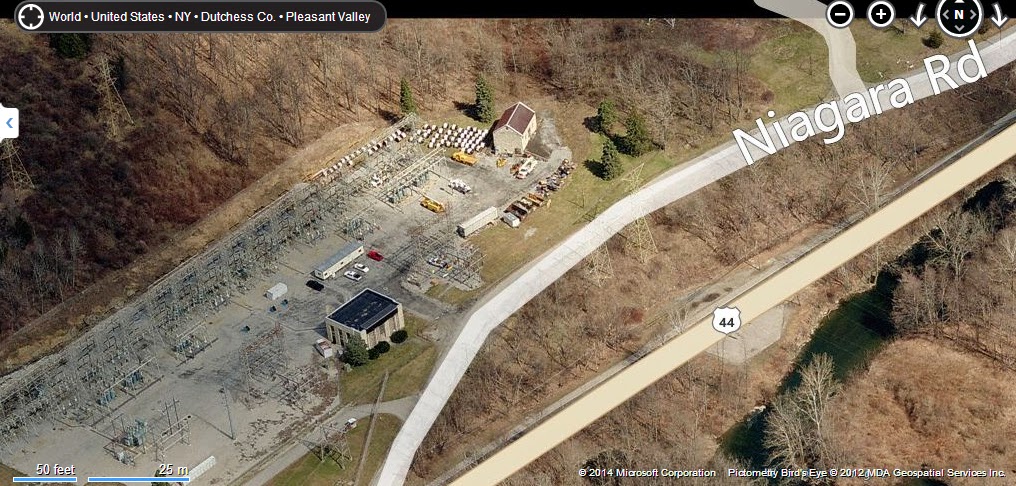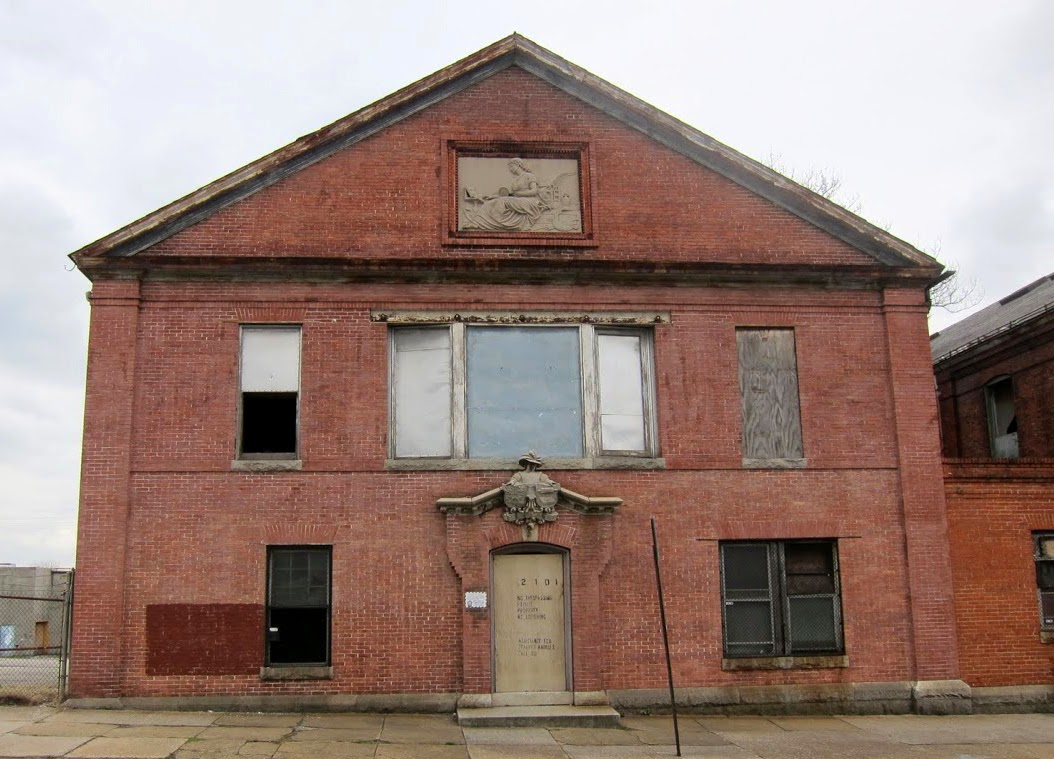Why are there two words for mineral concretions? And what does that have to do with urban ecology?
I recently visited Newark, NJ to work with BES urban design expert, Brian McGrath. He lives in an the old industrial neighborhood of “The Ironbound,” and like many such places, there is great dynamism. Some old buildings are being demolished, restaurants and clubs are being renovated in this place famous for Portuguese food, and the general rust down, fix up of lively urban places is much in evidence. As we walked to a (strong!) coffee break during an afternoon of writing, I noticed a vacant lot that contained a big, smooth, ovoid boulder next to a yellow backhoe. The lot sloped gently into the cellar hole of the missing building, and the rock and the backhoe were the only adornments I noticed in the fenced lot.
A Rock in the City
Why did I call it a rock, and not a stone? This big rock with a grey, smooth surface was a remnant of the last glacial age. It looked like nothing so much as a huge, water smoothed pebble – the sort of thing you could see on the bottom of a creek. But this one was about a meter and a half long, and a meter wide. It looked to be a little flattened, so that it would not roll easily. Of course this rock was big enough so that it wouldn’t roll easily in any event.
My big rock, was in fact a scaled up version of a
 |
| The Newark rock. Photo: Victoria Marshall |
creek pebble, but the water in which the lonely Ironbound boulder was shaped was the water released by a mile-high mass of ice as it melted. Such meltwater streams were huge, and they could carry rocks half the size of a first-generation suburban tract house. Those streams tumbled the big and the small rocks that had been dislodged and trapped as the ice ground across the surface of northern North America some 20,000 years ago. And this one was a good sized, but not a gigantic representative of glacial grinding followed by years of tumbling down the huge glacially fed precursor of the Passaic River. The Passaic River is now a pretty respectable stream. But when the glaciers were melting, it would have been much larger, and been joined to a sibship of other massive streams coursing toward the then distant Atlantic coast. As the glaciers were exhausted by their own melting, the massive streams shrank and left deposits of mixed, smoothed sediments, pebbles, cobbles, and boulders.
When I commented on the rock to Brian, he smiled and said that our landscape architect colleague, Victoria Marshall had also commented on the boulder. Brian’s remark went something like “you landscape people notice the same things.”
Stones in the Country
Then I thought of another architect/ecologist story from some dozen years earlier. Brian and Victoria were kind enough to include me as an ecological resource person in some of their urban design studios. On one occasion, we arranged for some of the students to come up to the Cary Institute to work with me and fellow ecologist Mary Cadenasso. I picked them up at the train station in Poughkeepsie, NY, and drove them the 13 miles on Rte 44 through the Dutchess County suburbs, engulfed agricultural mill towns, and exurban fringe with its regrowing, post-agricultural woods. We drove down a small hill into the village center of Pleasant Valley, and as we turned the corner heading into town, we were presented with two architectural gems. One was a two story, Art Deco switching station sitting amid huge power pylons and banks of muscular electrical transformers. But a bit beyond the buff and black Art Deco treasure was a limestone barn, of much greater age. The barn was large, had simple lines, just a few windows, a gable roof and the expected huge wooden doors in the side.
One of the architects exclaimed aloud at the unexpected visual treat. Now the “landscape” joke here is definitely on me, because I had been driving by that transformer yard for about 12 years before I even noticed the old barn. Let’s give me a break and say it was because I was the ever cautious driver who always looked at the road. But in reality, it was that I wasn’t tuned into the built in this odd, now suburban site. I was usually looking at the creek on the other side of the road – was it in flood, or was the water low? Were there any lanky waterbirds standing by the bank? Were the big sycamores on the eroding banks still upright? Were the maple buds on the leafless branches expanding as the days got longer? That kind of “landscape” ecology stuff. To claim a little credit, I had actually finally noticed the stone barn a few years before the architecture student exclaimed over an unexpected and complex find.
 |
| Art Deco switching station lower left, old stone barn upper center. Bing.com |
Seeing Rocks and Seeing Stones
So there are two contrasts in these stories. Rocks versus stones, and who sees rocks and who sees stones. Rocks are generally considered those things out there in, on, and of the ground that are found where the volcanoes, rivers, glaciers, faults, uplift, and erosion left them. They may have smooth or sharp edges depending on how long and how effectively water and wind have worked them, or whether the work has been dome by freezing and thawing of water in almost imperceptible cracks.
Stones on the other hand are things that have been shaped and arranged by people. The stone barn was assembled from blocks of limestone quarried from very nearby. Because many of the early colonial houses in the Hudson Valley are made of limestone, or sometimes roughly worked shale, I should not have been surprised to find an elegant, simple old barn constructed of limestone that could be obtained close by. But even though limestone tends to fracture in relatively flat planes, there is some work in the quarrying. And the shale and slate from one of the twisty formations of these rocks in Dutchess County, NY would likely have to undergo some hammer blows to make them fit better in building walls.
Here’s the big difference. Stones may be found, but more likely worked, and them moved and arranged by people for their purposes. That’s different from rocks, that just are, though they may be used pretty much as they are found sometimes. Field walls are more likely an example of “use as found,” of course, since they don’t have to be weather-tight. So the difference between stones and rocks says something about origin of the mineral conglomeration, the source of the energy shaping them, and whether there is purpose embodied in the shape.
It might be too easy to make a big deal out of an architect seeing buildings – stones; and an ecologist paying attention to other things at the same bend in the road. Too easy to make a “thing” out of being excited by seeing an unexpected glacial relic a few blocks from the Newark train station. Does one always have to see rocks OR stones?
Saxa Loquuntur
Now we are back to urban ecology. One could say that in the past, when urban ecology as a biological science was just getting started, it was conducted through the filter of seeing rocks in the city. Looking for those places, processes, and entities that represented the unintentionality of nature motivated a lot of the earliest work by bioecologists in the city. And it is very important to see this part of urban systems, as Anne Whiston Spirn suggested in her 1984 book, Granite Garden. Cities work in part because there is natural work going on in and around them. But her title also tells us that it is proper and necessary to see the built, the designed, the engineered, and the lived in as a part of an expanded view of urban ecology. One has to see the stones of the city.
 |
| The A. Hoen Lithography and Printing factory. S. Pickett |
But most urbanism in the past has focused only on the stones – the built fabric of cities – and ignored the biological processes that traditional ecology has pointed out to occur even in urban centers. So it’s not a matter of stones versus rocks, but of a conversation that values both. The pleasures of the architect joined with the pleasures of the ecologist, and the joys of the social scientist, as well, who help us understand how people live in and make decisions about our gardens of rock and stone. As the bas reilef shield above the door of the now abandoned A. Hoen & Company lithography and printing shop in East Baltimore tells us, Saxa loquuntur – The stones are speaking to you. (http://www.zigersnead.com/current/blog/post/saxa-loquuntur-stones-and-stories-of-hoen-lithography/09-13-2011/3452/) So are the rocks. It’s a language that requires many differently trained ears to hear, and many voices to translate. That’s today’s urban ecology.





